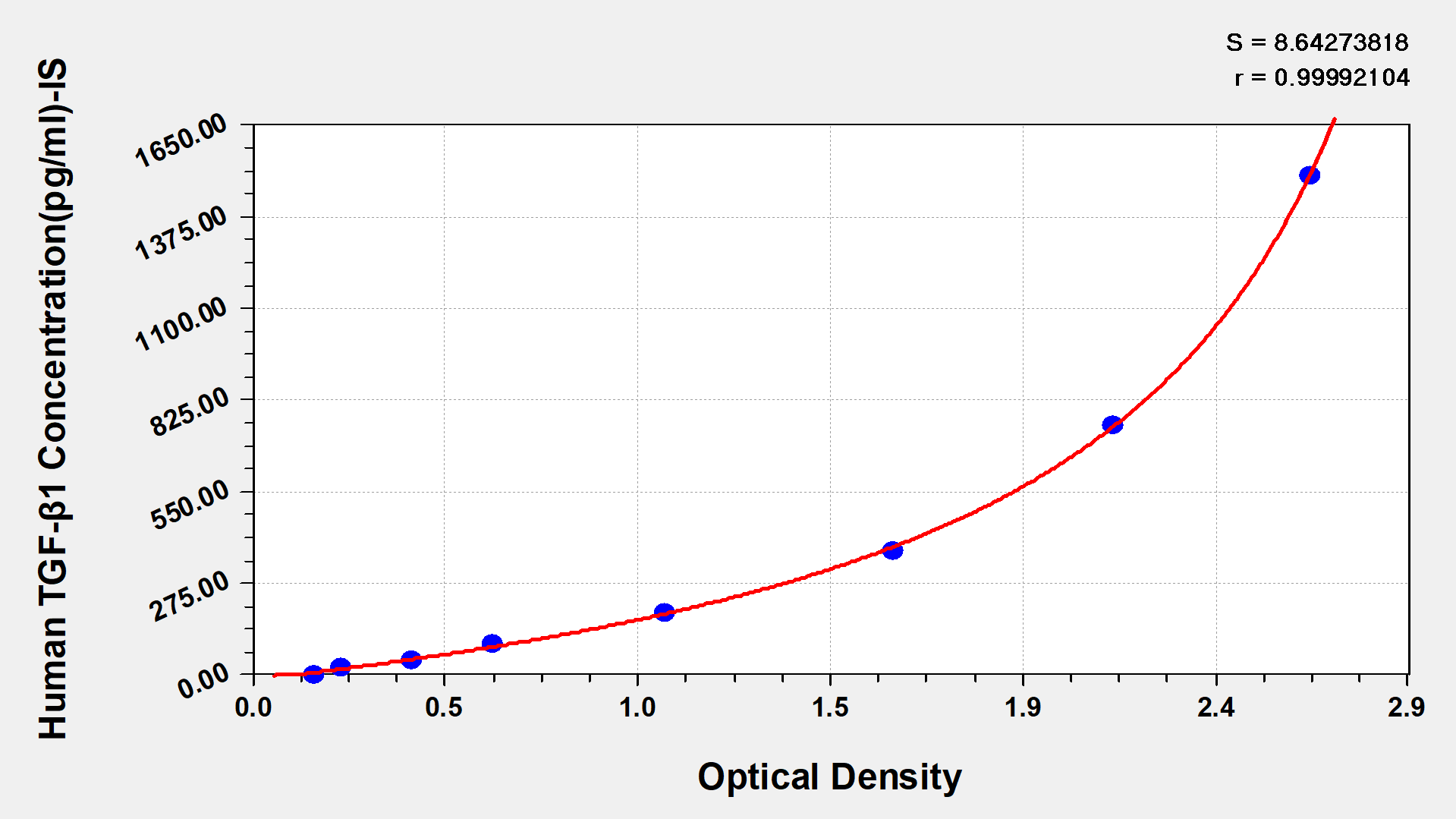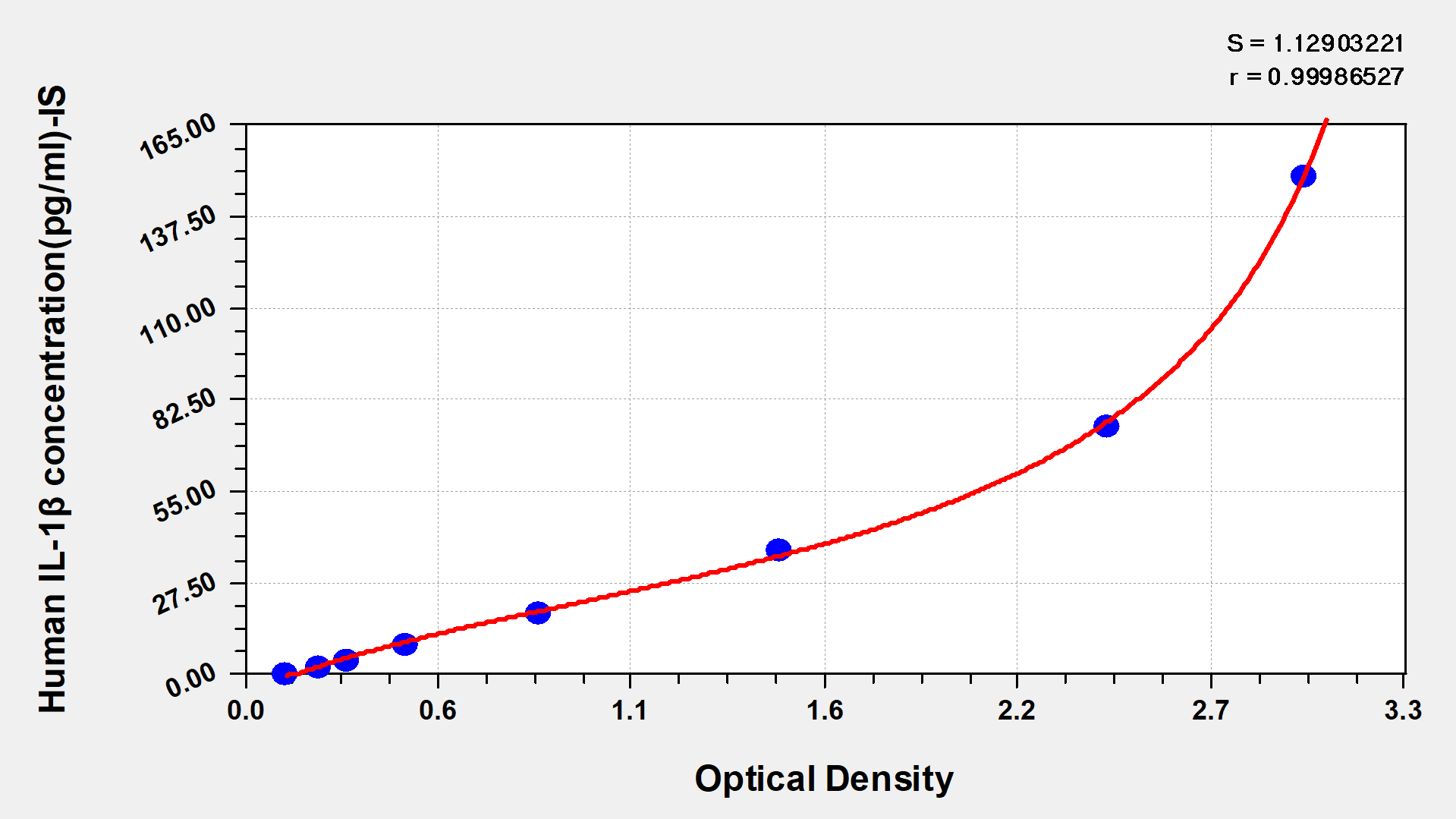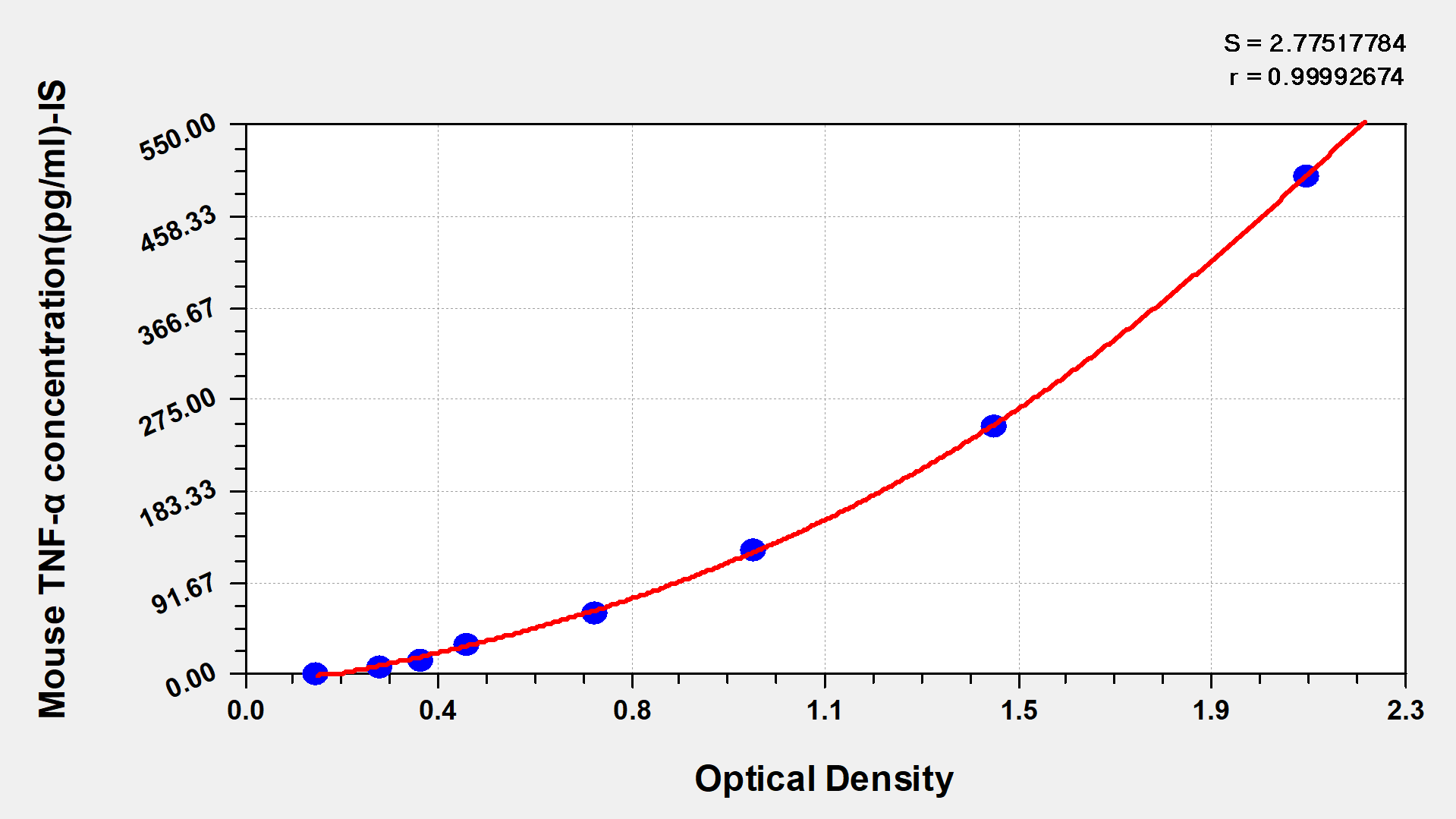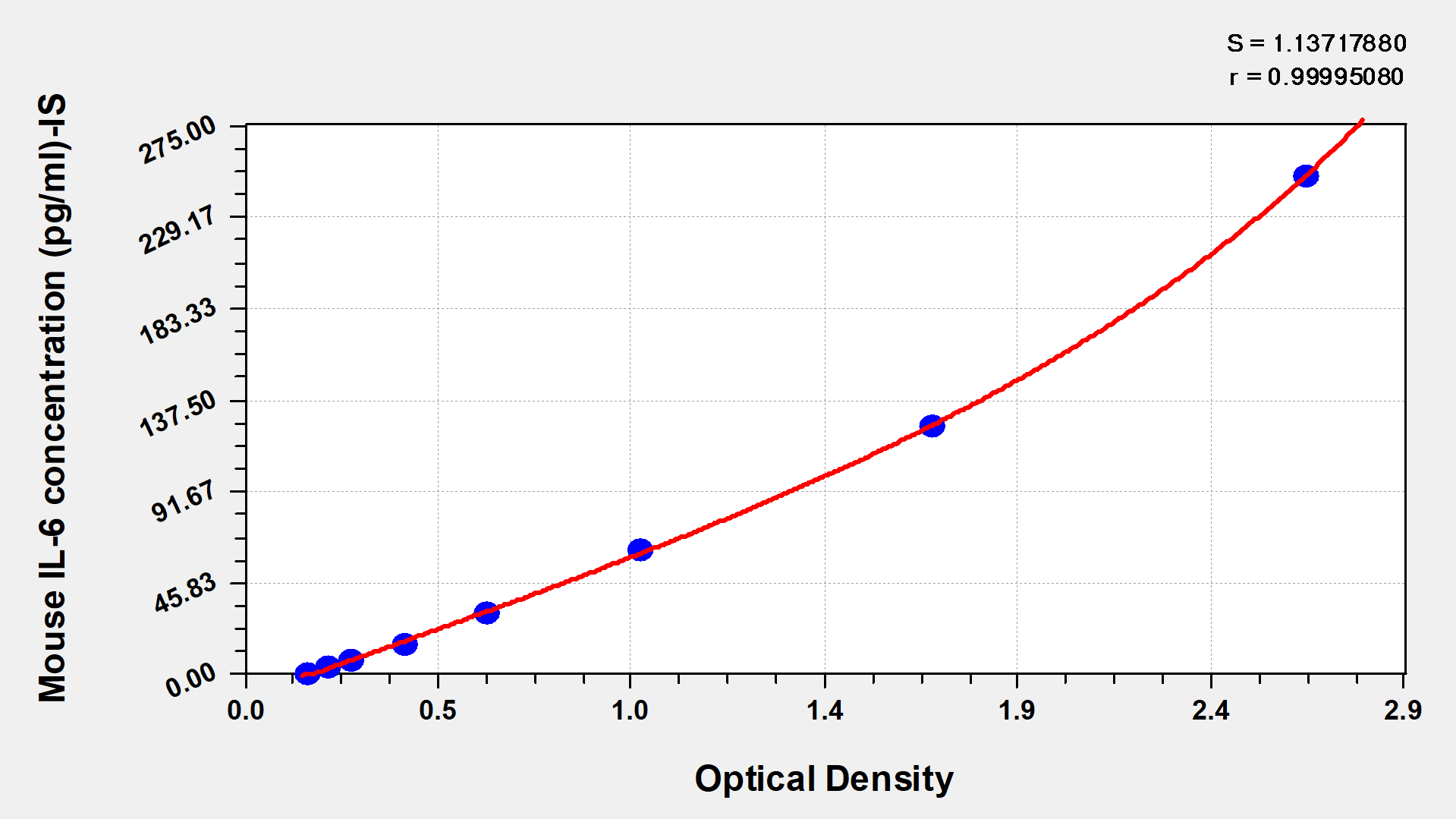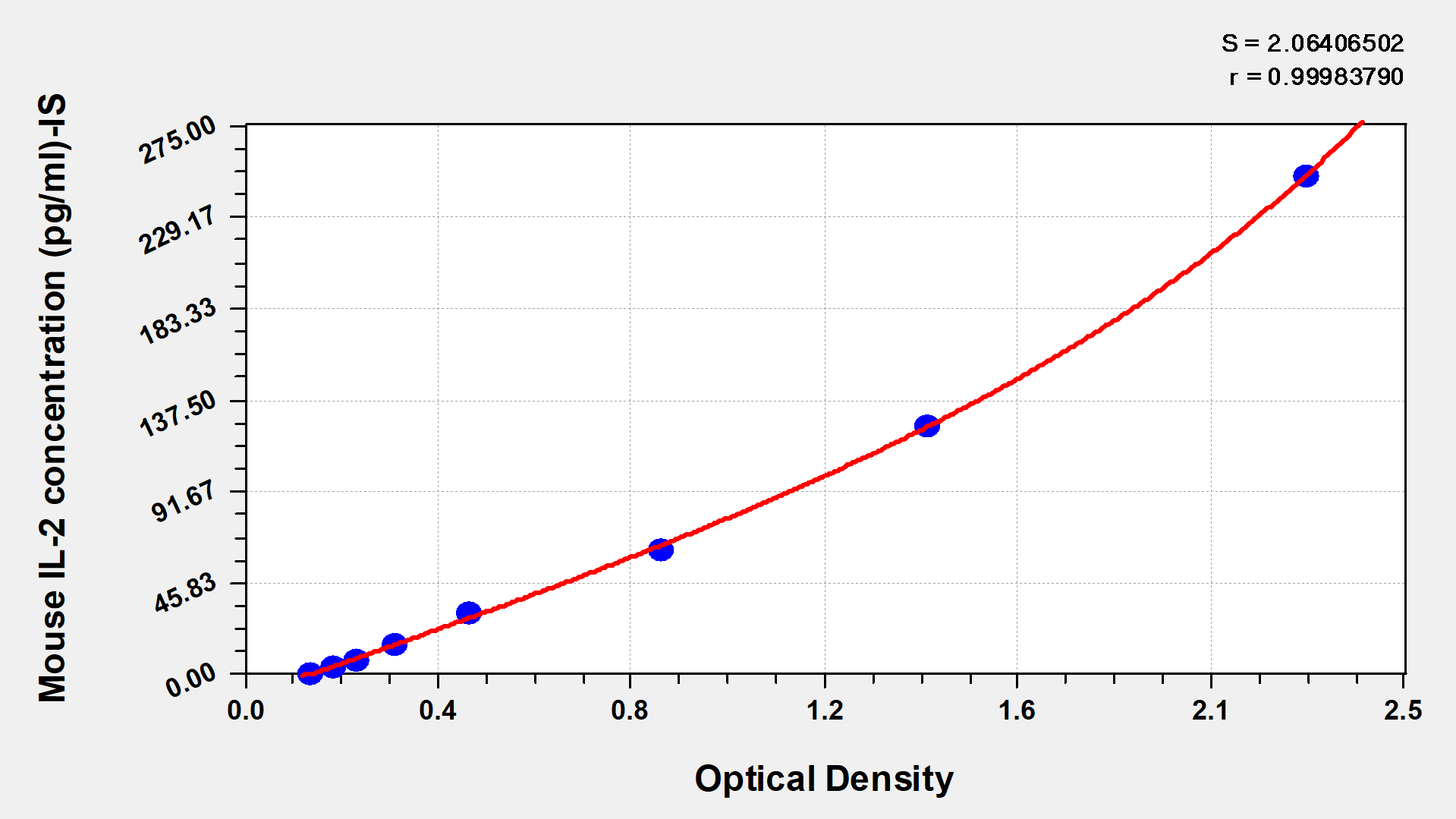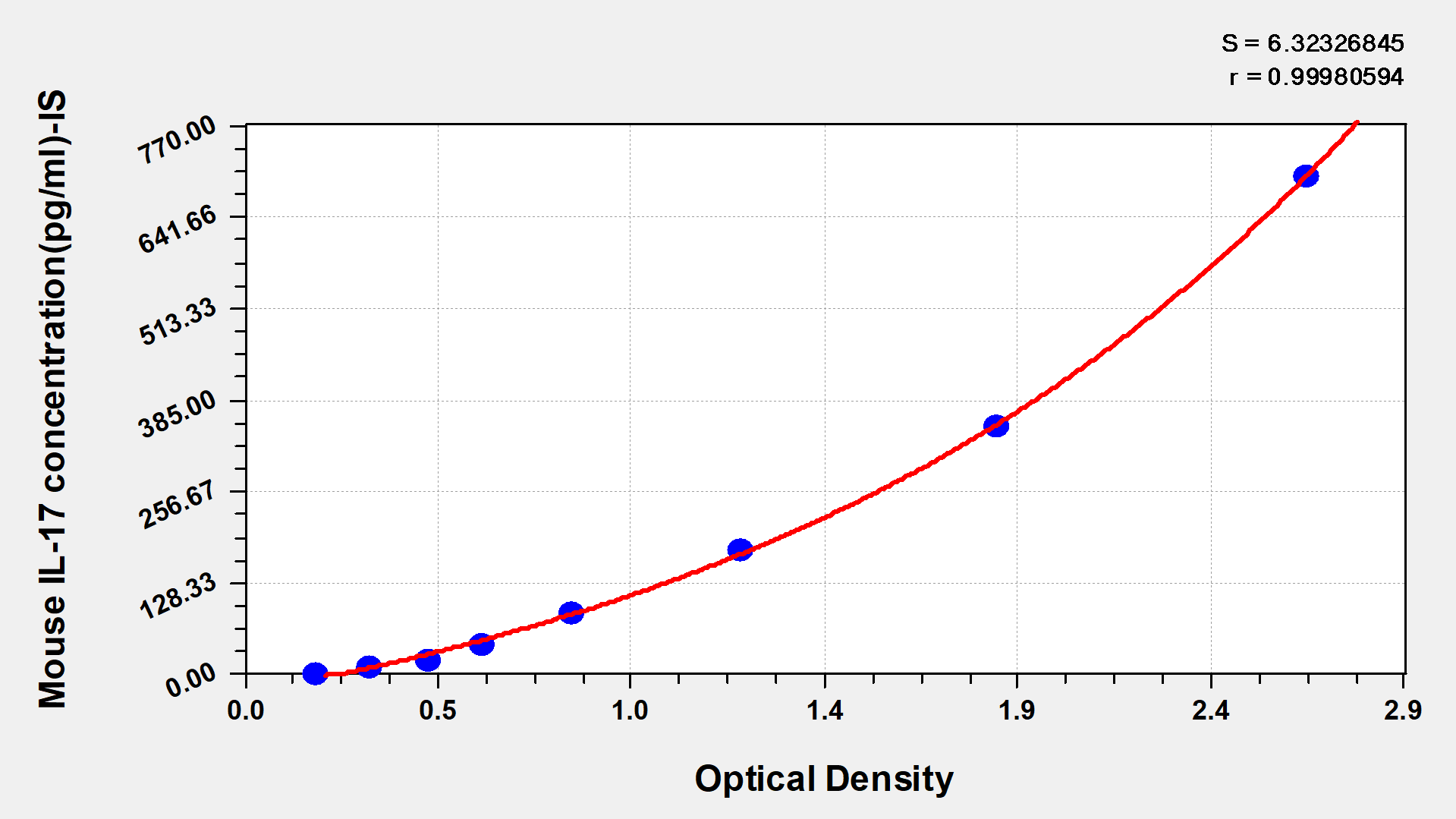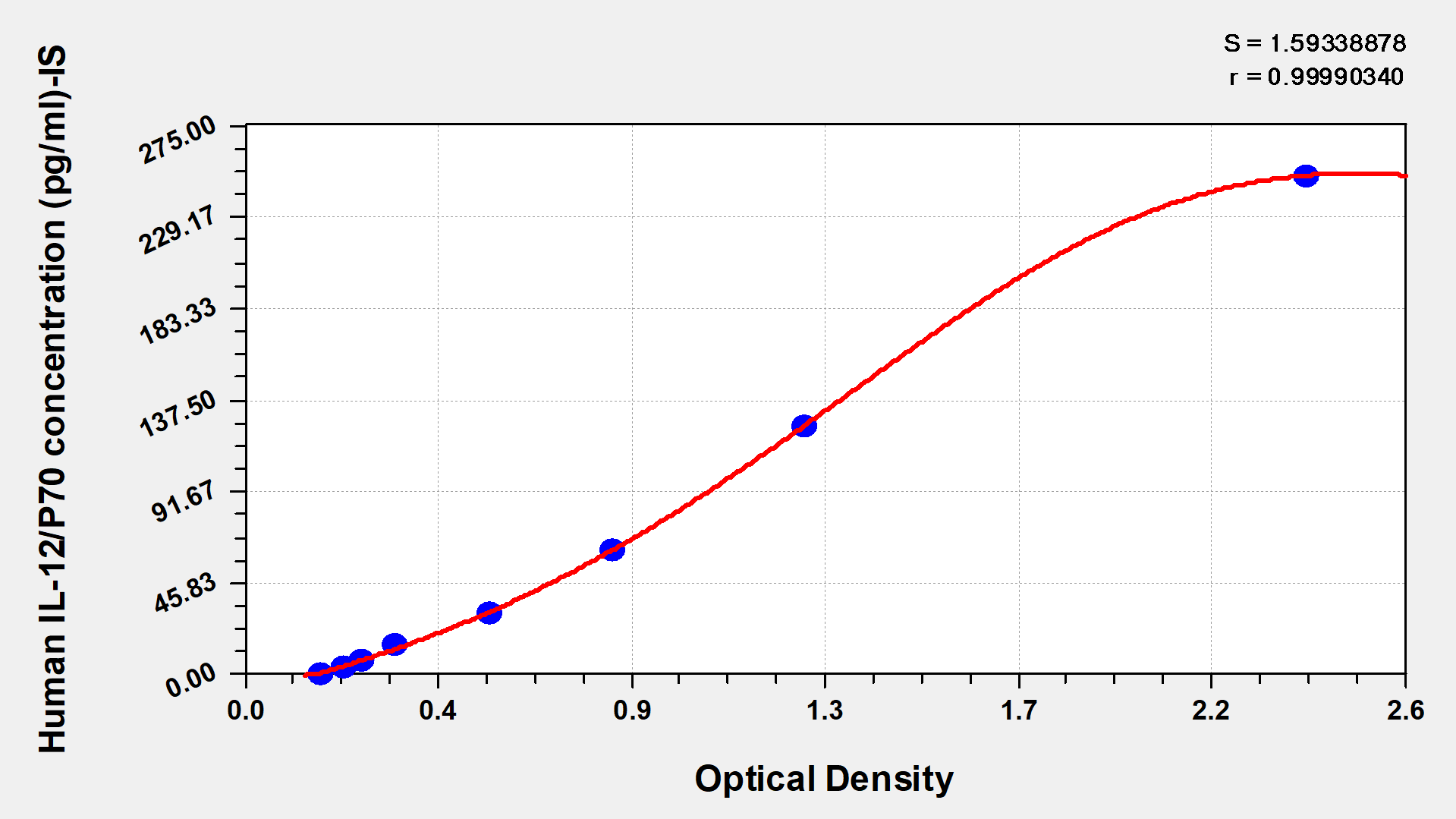Human tight junction protein 1 (ZO1) ELISA Kit
-
中文名稱:
人緊密連接蛋白1(ZO1)酶聯免疫試劑盒
-
貨號:
CSB-E13916h
-
規格:
96T/48T
-
價格:
¥3600/¥2500
-
其他:

產品詳情
-
產品描述:
人緊密連接蛋白1(ZO1)酶聯免疫試劑盒(CSB-E13916h)為雙抗夾心法ELISA試劑盒,定量檢測血清、血漿、組織培養上清液、細胞裂解物樣本中的TJP1含量。試劑盒檢測范圍為15.6 pg/mL-1000 pg/mL,適用于體外培養細胞模型、組織樣本或生物液體中ZO1蛋白的定量研究,可助力于細胞生物學、藥物開發或疾病機制研究中探討ZO1在生理或病理狀態下的調控機制,滿足科研場景中對ZO1蛋白表達動態的高通量分析需求。本品僅用于科研,不用于臨床診斷,產品具體參數及操作步驟詳見產品說明書。
-
別名:
Tight junction protein 1 ELISA Kit; Tight junction protein ZO-1 ELISA Kit; Tight junction protein ZO1 ELISA Kit; TJP1 ELISA Kit; zo-1 ELISA Kit; Zo1 ELISA Kit; ZO1_HUMAN ELISA Kit; Zona occludens 1 ELISA Kit; Zona occludens 1 protein ELISA Kit; Zona occludens protein 1 ELISA Kit; Zonula occludens 1 protein ELISA Kit; Zonula occludens protein 1 ELISA Kit
-
縮寫:
-
Uniprot No.:
-
種屬:
Homo sapiens (Human)
-
樣本類型:
serum, plasma, cell culture supernates, cell lysates
-
檢測范圍:
15.6 pg/mL-1000 pg/mL
-
靈敏度:
3.9 pg/mL
-
反應時間:
1-5h
-
樣本體積:
50-100ul
-
檢測波長:
450 nm
-
研究領域:
Tags & Cell Markers
-
測定原理:
quantitative
-
測定方法:
Sandwich
-
精密度:
| Intra-assay Precision (Precision within an assay): CV%<8% | | | |
| Three samples of known concentration were tested twenty times on one plate to assess. | |
| Inter-assay Precision (Precision between assays): CV%<10% | | | |
| Three samples of known concentration were tested in twenty assays to assess. | | |
| | | | | | | |
-
線性度:
| To assess the linearity of the assay, samples were spiked with high concentrations of human ZO1 in various matrices and diluted with the Sample Diluent to produce samples with values within the dynamic range of the assay. |
| | Sample | Serum(n=4) | |
| 1:1 | Average % | 84 | |
| Range % | 80-90 | |
| 1:2 | Average % | 99 | |
| Range % | 91-104 | |
| 1:4 | Average % | 100 | |
| Range % | 92-108 | |
| 1:8 | Average % | 94 | |
| Range % | 86-98 | |
-
回收率:
| The recovery of human ZO1 spiked to levels throughout the range of the assay in various matrices was evaluated. Samples were diluted prior to assay as directed in the Sample Preparation section. |
|
| Sample Type | Average % Recovery | Range | |
| Serum (n=5) | 95 | 89-97 | |
| EDTA plasma (n=4) | 97 | 90-99 | |
| | | | | | | |
| | | | | | | |
-
標準曲線:
| These standard curves are provided for demonstration only. A standard curve should be generated for each set of samples assayed. |
|
 | pg/ml | OD1 | OD2 | Average | Corrected | | | 1000 | 2.484 | 2.467 | 2.476 | 2.329 | | | 500 | 1.707 | 1.678 | 1.693 | 1.546 | | | 250 | 1.076 | 1.055 | 1.066 | 0.919 | | | 125 | 0.679 | 0.669 | 0.674 | 0.527 | | | 62.5 | 0.441 | 0.436 | 0.439 | 0.292 | | | 31.2 | 0.297 | 0.287 | 0.292 | 0.145 | | | 15.6 | 0.222 | 0.209 | 0.216 | 0.069 | | | 0 | 0.149 | 0.145 | 0.147 | | |
|
-
本試劑盒所含材料:
- A micro ELISA plate --- The 96-well plate has been pre-coated with an anti-human ZO-1 antibody. This dismountable microplate can be divided into 12 x 8 strip plates.
- Two vials lyophilized standard ---Dilute a bottle of the standard at dilution series, read the OD values, and then draw a standard curve.
- One vial Biotin-labeled ZO-1 antibody (100 x concentrate) (120 μl/bottle) ---Act as the detection antibody.
- One vial HRP-avidin (100 x concentrate) (120 μl/bottle) ---Bind to the detection antibody and react with the TMB substrate to make the solution chromogenic.
- One vial Biotin-antibody Diluent (15 ml/bottle) ---Dilute the Biotin-antibody.
- One vial HRP-avidin Diluent (15 ml/bottle) ---Dilute the HRP-avidin solution.
- One vial Sample Diluent (50 ml/bottle)---Dilute the sample to an appropriate concentration.
- One vial Wash Buffer (25 x concentrate) (20 ml/bottle) ---Wash away unbound or free substances.
- One vial TMB Substrate (10 ml/bottle) ---Act as the chromogenic agent. TMB interacts with HRP, eliciting the solution turns blue.
- One vial Stop Solution (10 ml/bottle) ---Stop the color reaction. The solution color immediately turns from blue to yellow.
- Four Adhesive Strips (For 96 wells) --- Cover the microplate when incubation.
- An instruction manual
顯示更多
收起更多
-
本試劑盒不含材料:
- A microplate reader capable of measuring absorbance at 450 nm, with the correction wavelength set at 540 nm or 570 nm.
- An incubator can provide stable incubation conditions up to 37°C±5°C.
- Centrifuge
- Vortex
- Squirt bottle, manifold dispenser, or automated microplate washer
- Absorbent paper for blotting the microtiter plate
- 50-300ul multi-channel micropipette
- Pipette tips
- Single-channel micropipette with different ranges
- 100ml and 500ml graduated cylinders
- Deionized or distilled water
- Timer
- Test tubes for dilution
顯示更多
收起更多
-
數據處理:
-
貨期:
3-5 working days
引用文獻
-
Mucosal‐associated invariant T cells correlate with myocardial ischaemia and remodelling in coronary artery disease
J Wang, S Li, X Zhou, H Wu, X Ouyang,Clinical & Translational Immunology,2025
-
Repetitive Low-Level Blast Exposure Alters Circulating Myeloperoxidase, Matrix Metalloproteinases, and Neurovascular Endothelial Molecules in Experienced Military Breachers
SG Rhind, MY Shiu, C Tenn, A Nakashima,International Journal of Molecular Sciences,2025
-
Application of Intestinal Barrier Molecules in the Diagnosis of Acute Cellular Rejection After Intestinal Transplantation
Y Chen,/,2023
-
Korrelation retinaler Gef??muster mit neuropsychologischen Leistungen und Liquormarkern bei Patienten mit Subkortikaler Vaskul?rer Enzephalopathie (SVE)
U Sebert,/,2022
-
A lower duodenal immune response is associated with an increase of insulin resistance in patients with morbid obesity
Ho-Plagaro A, et al,International Journal of Obesity,2019
-
Lactobacillus plantarum HY7714 Restores TNF-α Induced Defects on Tight Junctions
Nam B, et al,Preventive Nutrition and Food Science,2019
-
Increased systemic zonula occludens 1 associated with inflammation and independent biomarker in patients with hepatocellular carcinoma
Amit Kumar Ram.et al,BMC Cancer,2018
-
The Role of Circulating Tight Junction Proteins in Evaluating Blood Brain Barrier Disruption following Intracranial Hemorrhage
Jiao X.et al,Dis Markers.,2015
-
Circulating tight junction proteins mirror blood-brain barrier integrity in leukaemia central nervous system metastasis
Zhu JC.et al,Hematol Oncol.,2016
-
Increased circulatory levels of lipopolysaccharide (LPS) and zonulin signify novel biomarkers of proinflammation in patients with type 2 diabetes
Jayashree B et al,Mol Cell Biochem,2013
靶點詳情
-
功能:
TJP1, TJP2, and TJP3 are closely related scaffolding proteins that link tight junction (TJ) transmembrane proteins such as claudins, junctional adhesion molecules, and occludin to the actin cytoskeleton. The tight junction acts to limit movement of substances through the paracellular space and as a boundary between the compositionally distinct apical and basolateral plasma membrane domains of epithelial and endothelial cells. Necessary for lumenogenesis, and particularly efficient epithelial polarization and barrier formation. Plays a role in the regulation of cell migration by targeting CDC42BPB to the leading edge of migrating cells. Plays an important role in podosome formation and associated function, thus regulating cell adhesion and matrix remodeling. With TJP2 and TJP3, participates in the junctional retention and stability of the transcription factor DBPA, but is not involved in its shuttling to the nucleus.
-
基因功能參考文獻:
- Dysfunction of the miR-455-TJP1 axis is involved in bladder cancer cell growth and metastasis. PMID: 30061227
- The tight junction protein ZO-1 exists in stretched and folded conformations within epithelial cells, depending on actomyosin-generated force. PMID: 29199076
- miR103 was upregulated in CRC. Overexpression of miR103 promoted CRC cell proliferation and migration in vitro, whereas downregulation of miR103 inhibited cell proliferation and migration. ZO1 was identified as a direct target of miR103, revealing its expression to be inversely correlated with miR103 expression in CRC samples. PMID: 29115525
- SHANK3 expression correlated with ZO-1 and PKCepsilon in colonic tissue of patients with Crohn's disease. The expression level of SHANK3 affects ZO-1 expression and the barrier function in intestinal epithelial cells. PMID: 28906292
- These results indicate the varying effects of 7-oxygenated cholesterol molecules on the expression and localization of ZO-1 depending on cell types, and suggest the contribution of 7-oxygeneted cholesterol molecules to the structural alteration of tight junctions. PMID: 29428726
- CTR activates AKAP2-anchored cAMP-dependent protein kinase A, which then phosphorylates tight junction proteins ZO-1 and claudin 3. PMID: 28428082
- the Ras signaling pathway is involved in HIV-1 Tat-induced changes in ZO-1 and NEP. PMID: 28553432
- decreased interaction between ZO-1 and occludin might contribute to the epiphora occurred in the transplanted submandibular glands PMID: 28332063
- integration of claudin-2, occludin and ZO-1 is necessary for maintaining the function of the proximal tubular epithelium. PMID: 29252987
- Endothelial cellsTLR4 strongly regulates retinal vessel permeability by reducing expression of occludin and zonula occludens 1. PMID: 29136627
- The role of estrogens in the regulation of ZO-1 and estrogen receptors 1 and 2 was evaluated in human primary gut tissues by immunohistochemistry, immunofluorescence and qPCR. PMID: 28867253
- Aberrant expression of the tight junction molecules claudin-1 and zonula occludens-1 mediates cell growth and invasion in oral squamous cell carcinoma cells. PMID: 27436828
- ZO-1-occludin interactions regulate multiple phases of epithelial polarization by providing cell-intrinsic signals that are required for single lumen formation. PMID: 27802160
- It is postulated that ZO-1, when not phosphorylated by PKC, keeps Octn2 in an active state, while elimination of this binding in DeltaPDZ mutant or after ZO-1 phosphorylation leads to diminution of Octn2 activity. PMID: 28257821
- Results uncovered ZO-1 as part of a signaling node activated by VEGF, but not Ang-1, that specifically modulates endothelial cells proliferation during angiogenesis. PMID: 26846344
- Data suggest that long noncoding RNA PlncRNA1 and microRNA miR-34c bound together to regulate the expressions of MAZ, ZO-1 and occludin. PMID: 28153728
- ZO-1 highly expresses in cell-cell junctions and is related to odontoblast differentiation, which may contribute to dental pulp repair or even the formation of an odontoblast layer. PMID: 27109589
- this study shows that the expression and the immunoreactivity of ZO-1 is decreased in the nasal epithelium of patients with allergic rhinitis PMID: 27216347
- The frequency of alleles and genotypes of rs2291166 gene polymorphism TJP1 was determined in the Mexico Mestizos population. The ancestral allele was the most prevalent. The conformational effect of this amino acid change was performed in silico. PMID: 26259745
- We identified potential nuclear and membrane biomarkers (increased expression of ZO-1, caveolin-1 and P2X7 receptor) of risks for placenta and pregnancy PMID: 26657896
- OCLN and ZO1 levels appear to be early prognostic markers in patients suffering from sepsis. PMID: 26863122
- The data suggest that ZO-1, along with CD38 and Zap-70, plays a role in cell cycle regulation in chronic B cell leukemia, and may be used as a prognostic marker in the disease monitoring. PMID: 26306999
- These data provide the first evidence that beta-catenin and ZO-1 are direct targets of E7 of the oncogenic beta-human papillomavirus types 5 and 8. PMID: 26645068
- Report TNF-alpha/Il6 mediated dysregulation of zonula occludens-1 properties in human brain microvascular endothelium. PMID: 25953589
- upon specific knockdown of the accessory TJP, ZO-1, undifferentiated NSCs showed decreased levels of key stem cell markers PMID: 25892136
- HTT may inhibit breast tumor dissemination through maintenance of ZO1 at tight junctions. PMID: 26293574
- These results suggest that the localization of ZO-1 in cell-cell contacts is differently regulated by activation and inhibition of JNK and/or p38 MAPK depending on the incubation period. PMID: 25435485
- CFTR colocalizes with ZO-1 at the tight junctions of trachea and epididymis, and is expressed before ZO-1 in Wolffian ducts. PMID: 25107366
- Phosphorylation state of the tyrosine of claudin-1 and claudin-2 regulates interaction with ZO1. PMID: 26023235
- miR-18a and RUNX1 could reversely regulate the permeability of blood-tumor barrier as well as the expressions and distributions of ZO-1, occludin and claudin-5. PMID: 25452107
- Zonula occludens-1, occludin and E-cadherin expression and organization in salivary glands PMID: 25248927
- ZO-1 was internalized and shown to accumulate in the cytoplasm of human podocytes in an IL-13 dose-dependent manner. PMID: 25683991
- The decreased UCP2 expression and increased ZO-1 expression suggest that the oxidative stress-induced mitochondrial dysfunction and tight junction formation may play pivotal roles in the progress of NVG. PMID: 23835672
- ZO-1 is a central regulator of VE-cadherin-dependent endothelial junctions that orchestrates the spatial actomyosin organization. PMID: 25753039
- Tjp1 expression was decreased in glomerular diseases in human and animal models, our results indicate that the suppression of Tjp1 could directly aggravate glomerular disorders, highlights Tjp1 as a potential therapeutic target. PMID: 25184792
- In conclusion, our present study indicated that miR-34c regulated the permeability of BTB via MAZ-mediated expression changes of ZO-1, occludin, and claudin-5. PMID: 25201524
- ZO-1 showed a tendency to be detected more intensely in myocardial infarction and ischemic heart disease myocardial tissue then in asphyxiation or drowning. PMID: 24368520
- ZO-1 gene shows a hypermethylation status in children with NHL. PMID: 24927439
- gene expression is regulated by p38MAPK PMID: 23856837
- High expression of ZO-1 is associated with good prognosis in non-small cell lung cancer. PMID: 24294375
- The LIM domain protein FHL1C interacts with tight junction protein ZO-1 contributing to the epithelial-mesenchymal transition of a breast adenocarcinoma cell line. PMID: 24657059
- luciferase assays and chromatin immunoprecipitation assays showed that KLF4 up-regulated the promoter activities and interacted with "CACCC" DNA sequence presented in the promoters of ZO-1, occludin, and claudin-5. PMID: 24318462
- our results identify a novel regulatory pathway involving the interplay between ZO-1, alpha5-integrin and PKCepsilon in the late stages of mammalian cell division. PMID: 23967087
- Data suggest components of diet supplements (here, glutamine/arginine) can improve permeability and tight junction protein expression (TJP1/occludin) in enterocytes exposed to deleterious effects of antineoplastic agents (here, methotrexate). PMID: 23428392
- ZO-1 expression is correlated with malignant phenotypes of GIST. PMID: 23820955
- Vascular endothelial tight junctions and barrier function are disrupted by 15(S)-hydroxyeicosatetraenoic acid partly via protein kinase C epsilon-mediated zona occludens-1 phosphorylation at threonine 770/772. PMID: 24338688
- The presence of neural cells (PC12 cells or trigeminal neurons) markedly promoted the stratification of HCE cells as well as increased the amounts of N-cadherin mRNA and protein in these cells. PMID: 24327615
- The methylation positivity rates of the ID4 and ZO-1 genes in the bone marrow and paraffin-embedded lymphoma tissues of non-Hodgkin lymphoma patients were significantly higher compared to the rates in the Hodgkin lymphoma patients. PMID: 23670122
- Proteomic identification of ZO-1 binding partners and associated proteins that form tight junction complexes. PMID: 23553632
- Single nucleotide polymorphisms in TJP1 is associated with response to antipsychotic agents in schizophrenia. PMID: 23241943
顯示更多
收起更多
-
亞細胞定位:
Cell membrane; Peripheral membrane protein; Cytoplasmic side. Cell junction, tight junction. Cell junction. Cell junction, gap junction. Cell projection, podosome.
-
蛋白家族:
MAGUK family
-
組織特異性:
The alpha-containing isoform is found in most epithelial cell junctions. The short isoform is found both in endothelial cells and the highly specialized epithelial junctions of renal glomeruli and Sertoli cells of the seminiferous tubules.
-
數據庫鏈接:
Most popular with customers




